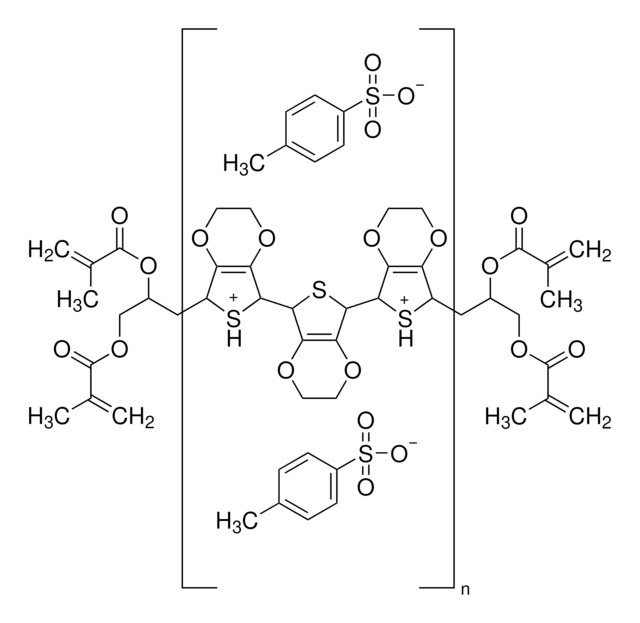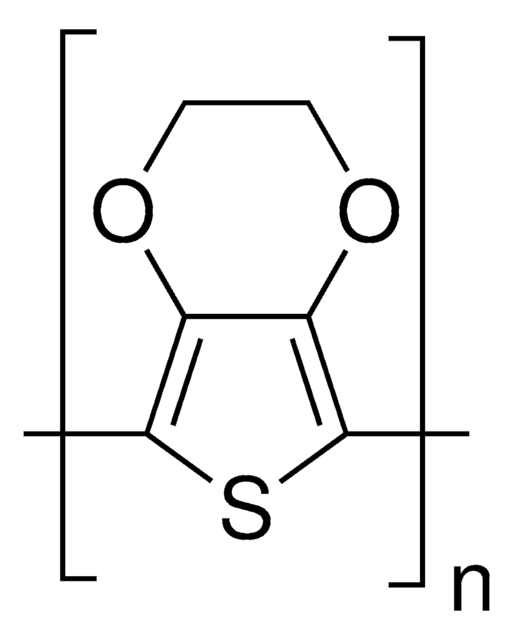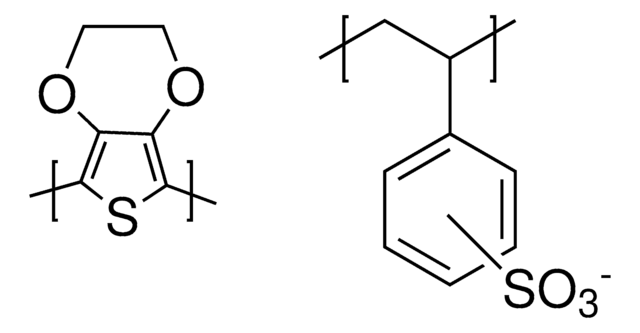649805
PEDOT, block PEG
solution, 1 wt. % dispersion in nitromethane, contains perchlorate as dopant
Sinonimo/i:
Aedotron™ C-NM
About This Item
Prodotti consigliati
product name
Poly(3,4-ethylenedioxythiophene)-block-poly(ethylene glycol) solution, 1 wt % dispersion in nitromethane, contains perchlorate as dopant
contiene
perchlorate as dopant
Concentrazione
1 wt % dispersion in nitromethane
Resistenza
10,000-100,000 Ω/sq (spin cast thin films: typically 1-3 layers spun at 1,000 rpm)
Funzione lavoro
4.33 eV
Descrizione
40 nm (RMS roughness spin cast thin films)
Dimensione particelle
600-1000 nm (in suspension)
Conducibilità
0.1-5.0 S/cm (bulk)
Densità
1.127 g/mL at 25 °C
Cerchi prodotti simili? Visita Guida al confronto tra prodotti
Descrizione generale
Applicazioni
Avvertenza
Note legali
Avvertenze
Warning
Indicazioni di pericolo
Consigli di prudenza
Classi di pericolo
Acute Tox. 4 Inhalation - Acute Tox. 4 Oral - Carc. 2 - Flam. Liq. 3 - Repr. 2
Codice della classe di stoccaggio
3 - Flammable liquids
Classe di pericolosità dell'acqua (WGK)
WGK 2
Punto d’infiammabilità (°F)
96.8 °F - closed cup
Punto d’infiammabilità (°C)
36 °C - closed cup
Scegli una delle versioni più recenti:
Possiedi già questo prodotto?
I documenti relativi ai prodotti acquistati recentemente sono disponibili nell’Archivio dei documenti.
I clienti hanno visto anche
Articoli
New conducting and semiconducting polymers for plastic electronics
The application of conducting polymers at the interface with biology is an exciting new trend in organic electronics research.
Il team dei nostri ricercatori vanta grande esperienza in tutte le aree della ricerca quali Life Science, scienza dei materiali, sintesi chimica, cromatografia, discipline analitiche, ecc..
Contatta l'Assistenza Tecnica.







